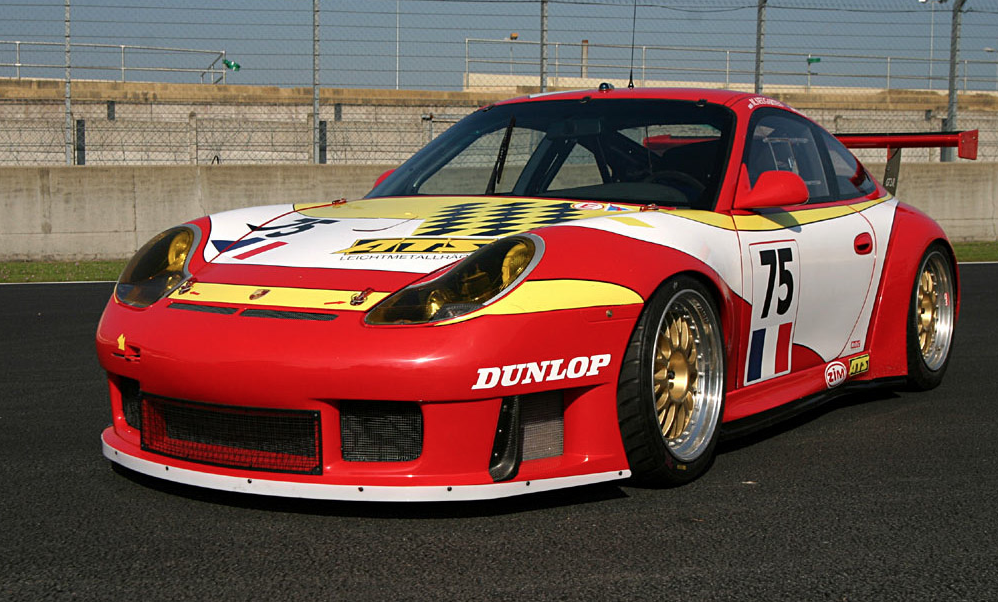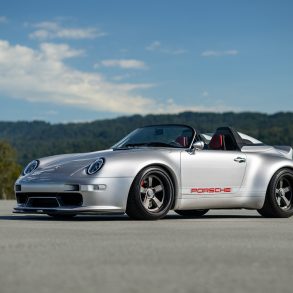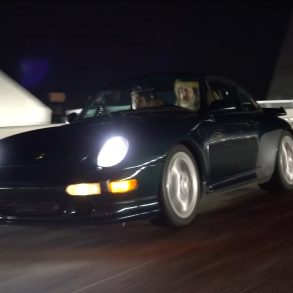(2001 – 2004) Porsche 911 GT3 RS Race Car – Ultimate Guide
In the 2000 FIA GT Championship, the 996 GT3 R was the dominant racer in the new N-GT class and won every run. In the same year, the factory-supported Phoenix Racing won the 24-hour race at the Nürburgring. In 2001, the modified version, now called the 996 GT3 RS, was used. The vehicle was not only very successful in its class, it also achieved overall victories.
Modeled on the 911 GT3 R, the GT3 RS race cars offered a number of technical improvements, which combine to ensure a racing car with optimal competitiveness. 50 racing cars were produced in the racing division in Weissach, these have for the most part already been delivered. The Gran Turismo racing sports car from Porsche displayed the most striking difference to its predecessors in the newly structured rear wing and a modified front section. The new aerodynamic package ensures improved output. The amended bow also optimizes the release of heat from the radiator.
The 911 GT3 RS 3,6 litre six cylinder box engine extracts the combustion air between two airflow clippers, this procedure replaces the simple air restrictor component installed in its predecessor. Many additional technical improvements make for a more efficient drive and increased reliability in the engine, which reaches 415 PS at 8200 R/min. Tried and tested technical features have remained unchanged such as single throttle valves, titanium small end bushes and a dry sump oil household with oil-water heat exchanger.
The hardest working components in the synchronised six gear engine have been taken from the from the 911 GT2 (993) with stronger torque to comply with the need for increased durability. A heat exchanger with an increased level of efficiency replaces the previously implemented air cooler. A welcome side effect: Whereas unwanted stops beside the race track previously resulted in an occasional blocked cooler and ensuing damage, this will no longer be the case in the future.
The racing undercarriage with McPherson struts at the front and the Porsche multi-steering axle at the rear complies in principle with the series. Diverse springs, variable, multiply adjustable shock absorbers and lateral stability as well as unibalar connections facilitate fine tuning to suit the respective track conditions. The impressive brake system with 32 mm thick, perforated brake discs with a diameter of 380 mm at the front and 355 mm at the rear axle required no improvement.
The GT3 RS had a huge tradition to uphold. Its predecessor made its debut in June 1999 with a win in its own class in Le Mans, which was repeated in 2000. In the American Le Mans Series (ALMS) the 911 GT3 R remained unbeaten for a period of two years with the exception of one race and won all GT international championship titles twice in succession. The FIA GT championship 2000 also proved to be the domain of the GT3 R: Porsche pilots took the first ten rankings in the driver championship, their teams won all the top positions in team ratings. Other highlights of the past year: A 911 GT3 R, entered by a client team, won the 24 hour race on the north bend of the Nuremberg Ring creating a new distance record. The Porsche 911 GT3 R was also the winner in its class at Daytona (USA) and Sebring (USA).
The good news is that this race car was not only very successful in its class, it also achieved overall victories. Jörg Bergmeister and Timo Bernhard prevailed against the much more powerful prototypes in the 2003 24-hour race in Daytona. In 2003, Stéphane Ortelli, Marc Lieb and Romain Dumas won the Spa-Francorchamps 24-hour race for the first time in the history of the FIA GT Championship in an NGT vehicle.
For the 2004 and 2005 racing season, Porsche Motorsport made changes and used the 911 GT3 RSR (996).













